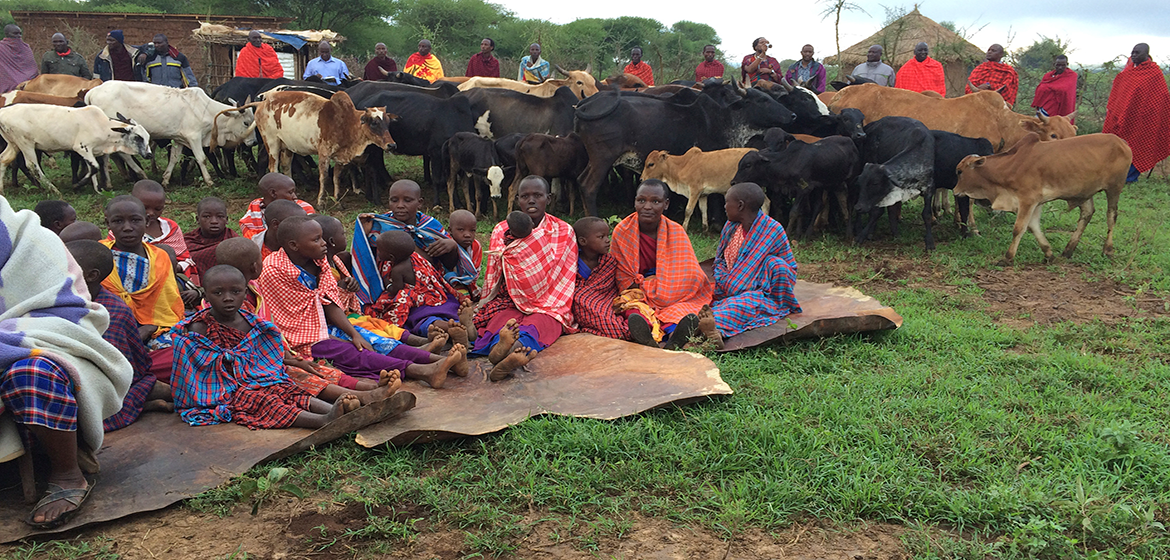According to the newly published by IWGIA, land grabbing is one of the biggest threats against indigenous peoples. Land-grabbing is rooted in different structural causes and is driven by a range of players. The case of Tanzania illustrates its pervasive consequences on indigenous land.
What is land-grabbing?
In most countries, the indigenous peoples are facing threats from governments that want to initiate huge infrastructure projects on their land, from private companies that want to expand their search for natural resources and from national park authorities that want to expand buffer zones for national parks and their wildlife. While Tanzania’s indigenous peoples face all these threats, the Maasai peoples are especially experiencing that their land is confiscated in the name of conservation.
“One of the biggest threats for indigenous peoples is land-grabbing. All over the world indigenous peoples are fighting to keep their rights to the land, which they have lived on for centuries and which their livelihood depends upon” explains Marianne Wiben Jensen, Team coordinator and Senior Advisor on Land Rights in IWGIA.
Indigenous peoples are part of the solution
The most known indigenous peoples group in Tanzania is the Maasai with a population estimate of 430.000 and many Maasai’s are dependent of their livestock for survival. These pastoralist communities depend on their land to grass their animals as their families have done it for generations. Despite the fact that the Tanzanian government in 2007 voted in favour of the UN Declaration on the Rights of Indigenous Peoples (UNDRIP), which secures indigenous peoples rights in various ways, the government continues to deny that indigenous peoples exist in Tanzania.
Instead Tanzania’s government continues to ignore the Maasai’s rights to their land. the 2018 edition of “The Indigenous World” reveals many cases where the government’s concern for conserving the remaining nature and generate incomes from tourists often is put above the concern for the Maasai’s livelihood, despite the fact that several published reports find that granting land rights to indigenous peoples often is the best way to conserve the nature.
“Indigenous peoples have for centuries guarded the nature and by securing their rights to their land, they can become an invaluable part of the solution to preserve the nature against the destruction that is going on all over the world” explains Marianne Wiben Jensen.
Maasai houses burned down in Loliondo
A land conflict in the Loliondo area, northern Tanzania, has recently escalated between the Ministry of Natural Resources and Tourism and eight Maasai villages. For centuries, the Loliondo area has been used by Maasai pastoralists to graze their livestock and the communities have also obtained legal rights to the land. Despite this, the Ministry of Natural Resources and Tourism has since 2009 tried to alienate more than 1.500 km2 of land from these Maasai villages on the broad justification of wildlife-conservation. The area in focus is a part of the Serengeti ecosystem that is home for many wildlife species and it constitutes 40 percent of the Loliondo area.
On the 5th of August 2017, the conflict escalated when Ngorongoro District Commissioner (DC), Mr. Rashid M. Taka, issued an order to relevant authorities that within five days they should remove all livestock from the so-called Serengeti National Park buffer zones, despite the Maasai villages’ legal claims to the area. After five days, law enforcers and special guards had burned down hundreds of houses and left more than 350 people homeless, many of whom were left to food insecurity, harassment and arbitrary arrest.
Time to stop forced evictions of Maasai's
With a public outcry and pressure from civil society organizations and international institutions, including IWGIA, the government halted the evictions in November 2017 and the new Minister of Natural Resources and Tourism said that the evictions had been illegally designed, without properly following the procedures. There is, however, currently no clear way forward to permanently resolve the issues. It is not yet clear how long the indigenous peoples of Loliondo will remain in a peaceful situation, and their future is uncertain as the situation quickly can evolve again.
“The land conflict in the Loliondo area is just one of many examples where conservation efforts have expanded into areas that indigenous peoples for centuries have depended upon for their survival. By taking the land from the Maasai communities you take away their livelihood, but we will continue our efforts to secure the rights of indigenous peoples” says Marianne Wiben Jensen from IWGIA.
This example is just one of many land conflicts that are described in The Indigenous World 2018. The book is written by 83 authors and cover recent developments for indigenous peoples in 56 countries and 13 international processes. You can read it for free
Read more about indigenous peoples in Tanzania
Source:
Related to SDG 10: Reduced inequalities and SDG 16: Peace, justice and strong institutions



